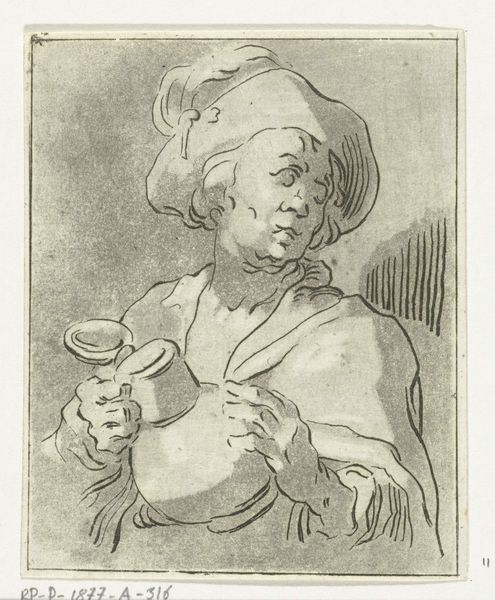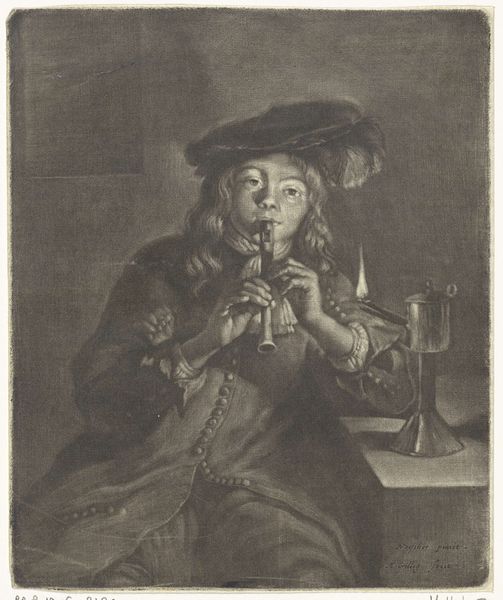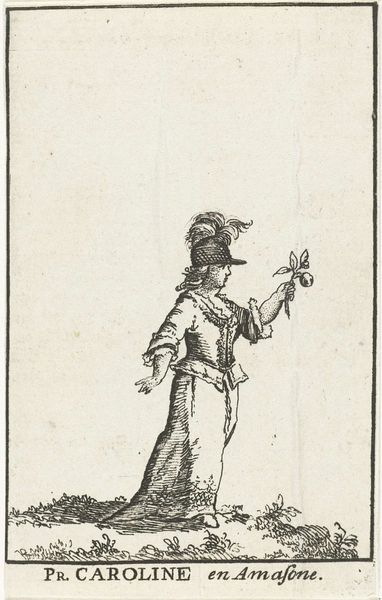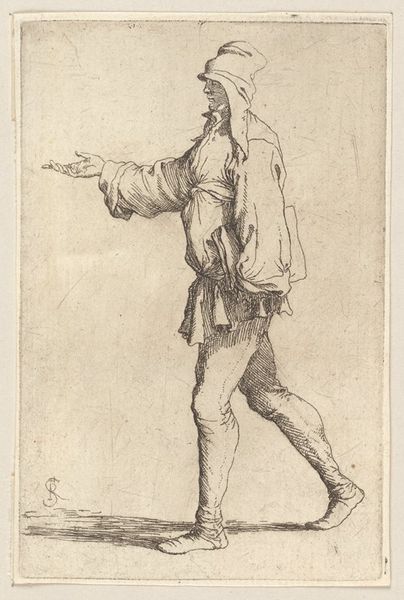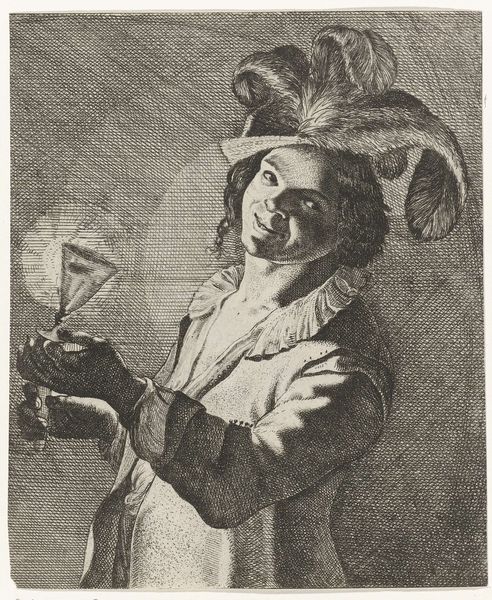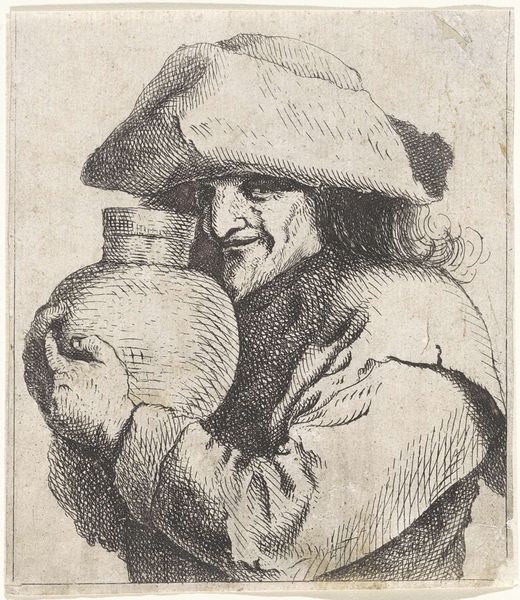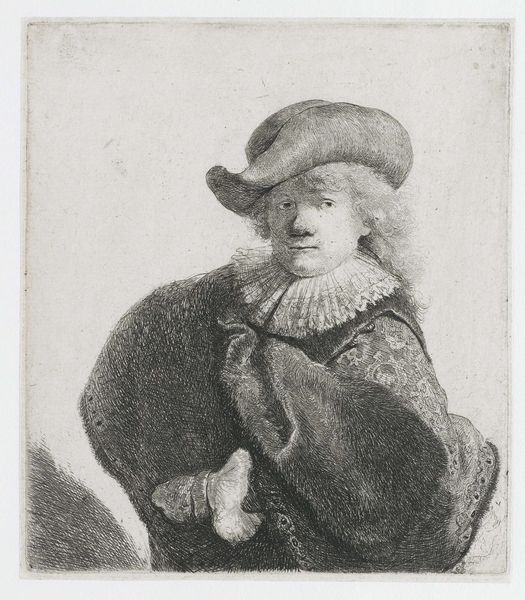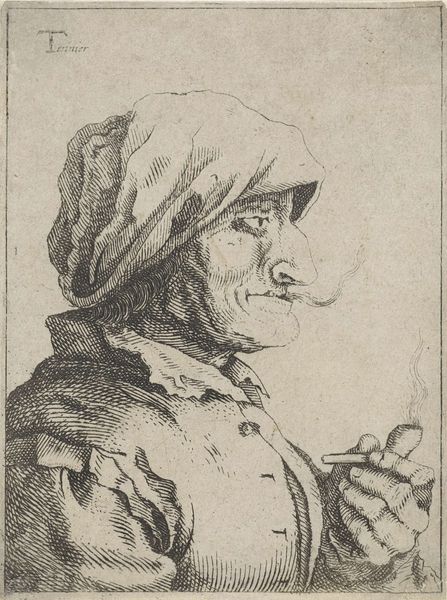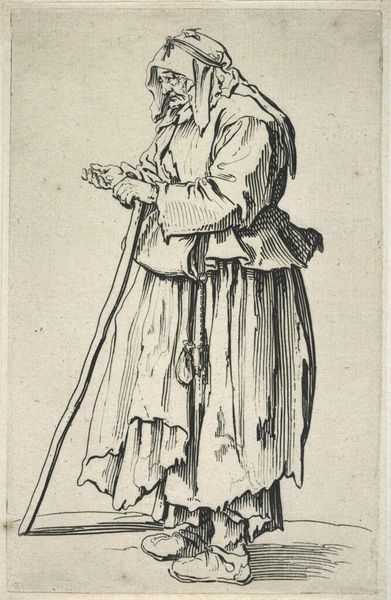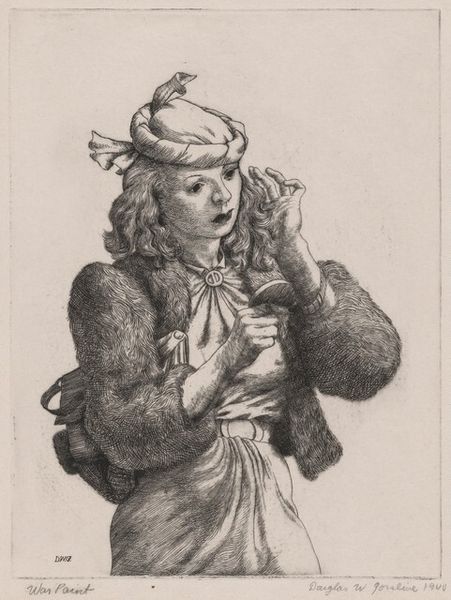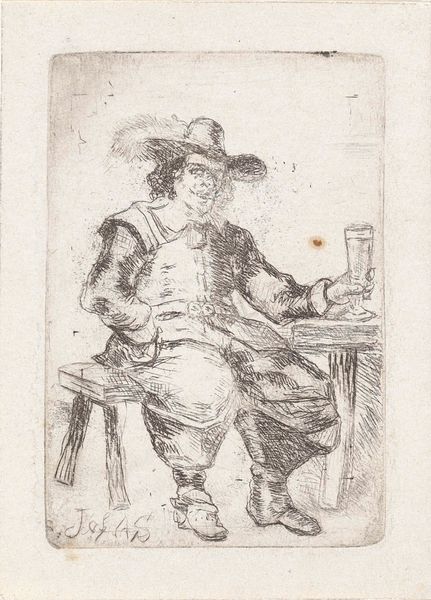
Man met een glas in opgeheven hand en een kruik onder zijn arm 1625 - 1674
0:00
0:00
etching
#
baroque
#
etching
#
genre-painting
#
history-painting
Dimensions: height 115 mm, width 102 mm
Copyright: Rijks Museum: Open Domain
Curator: Here we have an etching by Jan Lievens, dating sometime between 1625 and 1674, titled "Man met een glas in opgeheven hand en een kruik onder zijn arm" – or, “Man with a glass in raised hand and a jug under his arm.” Editor: Well, the man certainly looks jovial! The composition, rendered with a fine network of etched lines, gives the impression of a fleeting, lighthearted moment, even a bit disorderly. Curator: Indeed. The baroque influence is palpable, with the dynamic pose and the rendering of light across the figure, despite the constraints of the etching medium. Note the use of line weight to define form and volume. Editor: It feels more genre painting than historical somehow. Though the raised glass has long stood for celebration, here, combined with that somewhat mischievous grin, the jug tucked under his arm suggests something a bit more…carnivalesque. It feels more like everyday merriment. Is this the influence of folklore perhaps? A Bacchus figure gone Dutch? Curator: The symbolism could indeed be interpreted in multiple ways, aligning it with both historical painting, perhaps referencing classical themes of revelry, and genre painting that captures scenes from ordinary life. His dishevelled look suggests he could also represent vice, which would have been a very loaded message for the viewers of the time. Editor: The disarray almost looks staged though! Look how his clothes gather around his body, the light delicately illuminating his facial features. He seems fully conscious of the statement he's making. How does this fit into a tradition of human expression in the baroque? Curator: Think about it this way. Etching enabled broader circulation, therefore new social types became more common subject matter for artworks. So you are totally right in seeing the performative intention here, even the “staging” in a contemporary sense. The expressive features and garments combined with an ambiguous message may just speak of changing times. Editor: A delightful reminder that even in a single image, different histories and traditions might intermingle! Curator: Precisely, allowing us to trace shifts in artistic form, and wider cultural patterns simultaneously.
Comments
No comments
Be the first to comment and join the conversation on the ultimate creative platform.

